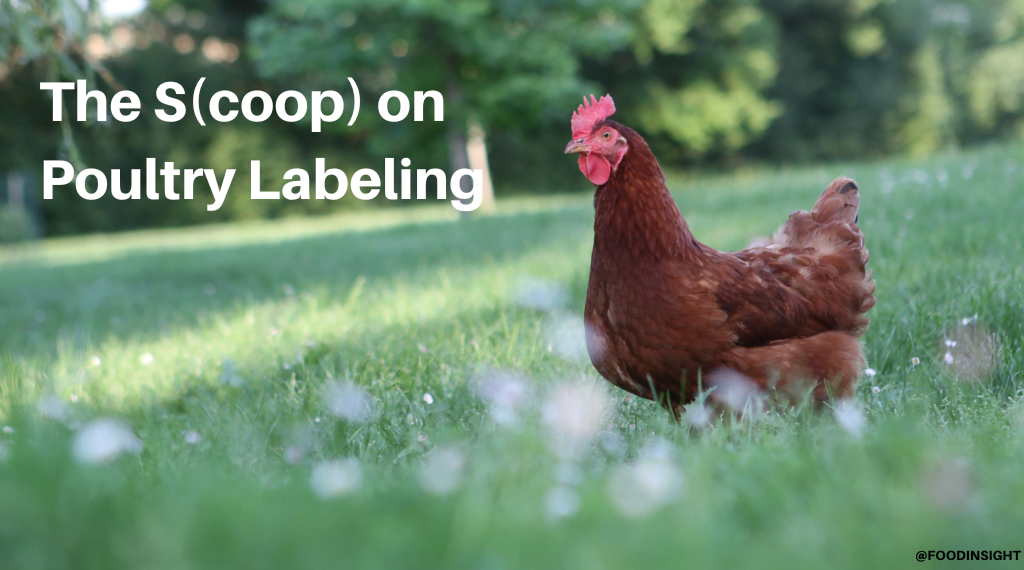Eggs are often dubbed an “incredible” food for a reason: They’re nutritious and delicious, and many of us enjoy them—whether scrambled, boiled, or fried. And for meat eaters, chicken can be equally delicious in all its forms—from a classic Sunday roast to kid-favorite fried tenders to game-day buffalo wings. But while the jury may always be out on which came first in the chicken-or-egg debate, these two poultry-based foods bring other conundrums to the grocery aisle. Specifically, when we shop for eggs and chicken, do we know how to understand all the labels that can show up on their packaging? Terms like “free-range” and “cage-free” may sound good in theory, but what do they really mean? And how much do we know about the broader farming practices behind chicken and egg production? Read on to learn how you can confidently navigate poultry labels the next time you’re buying chicken or eggs.
The Dish on Chicken-Raising Regulations
Most of us know that chicken provides a host of food benefits: It’s a great source of protein and other nutrients, is often accessible in most grocery stores, and is easily incorporated into many individual and family meals. And according to the U.S. Department of Agriculture (USDA), chicken consumption around the world is on the rise, with chicken tracking as the most consumed livestock commodity globally.
Animal welfare guidance for poultry includes regulations set forth and enforced by the USDA. Specifically, all U.S. chicken farmers are expected to adhere to both the federal Animal Welfare Act and the Poultry Product Inspection Act in their raising, handling, and processing of chickens for both meat (referred to as broilers) and egg-laying (layers). USDA expects that farms that raise chickens must ensure their facilities provide three foundational aspects to their production: proper nutrition (clean water and feed) for the chickens; protection from predators and disease; adequate room to grow and move; and veterinary care. Further regulations under the Food Security Act protect consumers who purchase these farm products.
Home on the Range
Even though “free-range chickens” constitute less than one percent of the billions of chickens produced in the United States each year, the term gets significant public attention, and many of us might wonder what exactly this label means. While all chickens are meant to be raised under the above-mentioned USDA regulations, in order for chicken products to be labeled “free-range,” they must have a specific kind of access to the outdoors. According to the USDA, chicken products can use this label when a “written description of the housing conditions is reviewed [by the USDA] to ensure there is continuous, free access to the out-of-doors for over 51% of the animals’ lives, i.e., through their normal growing cycle.”
It’s important to note that no broiler chickens (free-range or not) are raised in cages; instead, the majority are raised in “grow-out houses”—large barns that house the chickens. These houses help protect the chickens from predators and adverse weather conditions and allow farmers to assess chicken wellness more quickly. For free-range chickens, as asserted in the USDA description above, there is the additional requirement of a set amount of time the chickens should have access to the outdoors, but these chickens still need housing for protection and health monitoring.
They may have different conditions for raising, but do free-range chickens provide more nutritional value, or are they safer to consume than conventionally raised chicken? In short, the answer is no. Over the years, USDA research studies have found that free-range chicken does not present a reduced threat of Salmonella contamination (a common bacteria associated with raw chicken products and eggs that can cause foodborne illness and can be avoided with safe food-handling practices). As for nutrition, some research has found that free-range chicken can have a somewhat lower fat content in its thigh and breast meat than conventionally raised chicken—as well as more collagen, zinc, and protein. But other researchers have found that neither meat quality nor protein content are altered by chickens being raised free-range. IFIC’s take? If the way your chicken is raised is important to you, feel free (pun intended!) to purchase free-range-only poultry products—but know that all poultry produced under USDA regulations can provide a safe, healthy, and protein-packed source of food, with or without the “free-range” label.
Last But Not Least: The Labeling Lowdown on Eggs
In addition to the regulatory authority the USDA has over chicken meat and egg production, the department’s Agricultural Marketing Service (AMS) works to provide the validity of marketing claims such as “cage-free eggs.” The USDA states that “cage-free eggs must be produced by hens [layers] housed in a way that allows for not only unlimited access to food and water, but, unlike eggs from caged hens, also provides them the freedom to roam during the laying cycle.” Thus, cage-free eggs can come from chickens that are not deemed “free-range.” Being “cage-free” does not determine the safety or quality of the eggs; rather, this label offers information about how the egg was produced for consumers who may have ethical concerns about its raising. The USDA inspects cage-free farms twice a year to ensure that production practices are compliant with label claims.
There are other additional, federally guided labeling options for eggs; via AMS’s Livestock, Poultry, and Seed Program, poultry businesses can access shell-quality grading and certification services on a voluntary, fee-for-service basis. These services include the more widely known egg “grades.” As the USDA notes, “Egg cartons bearing the USDA Grade Shield—usually either “USDA Grade AA” or “USDA Grade A”—must meet strict U.S. quality standards.” In addition to verifying egg grades, the USDA also inspects egg-processing facilities for proper sanitation, storage, identification, and traceability methods, including code dating and plant numbers.
If you’re interested in learning about even more egg labels, this USDA resource gives further details about how egg-labeling processes are managed by the agency, as well as information on other labels that may be given to eggs, including “omega-3-enriched,” “organic,” “vitamin-enhanced,” and more!
